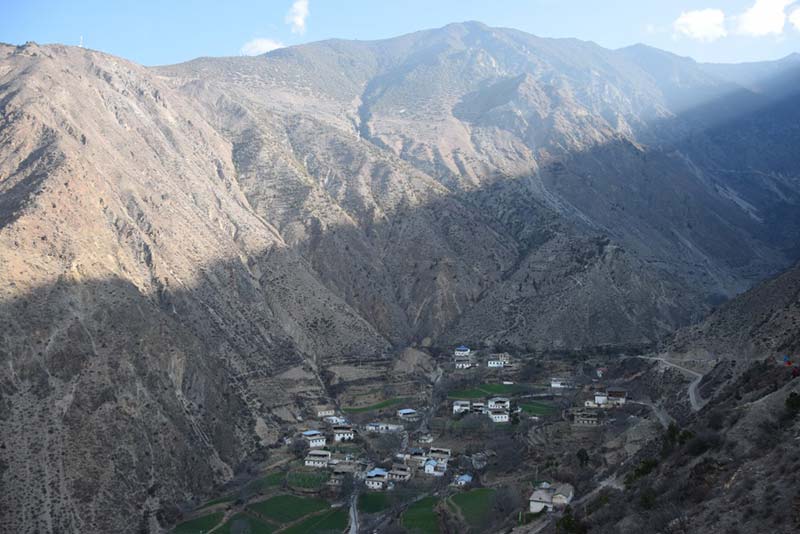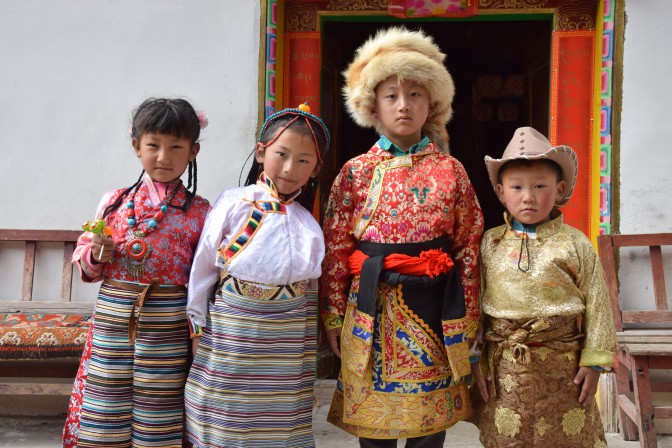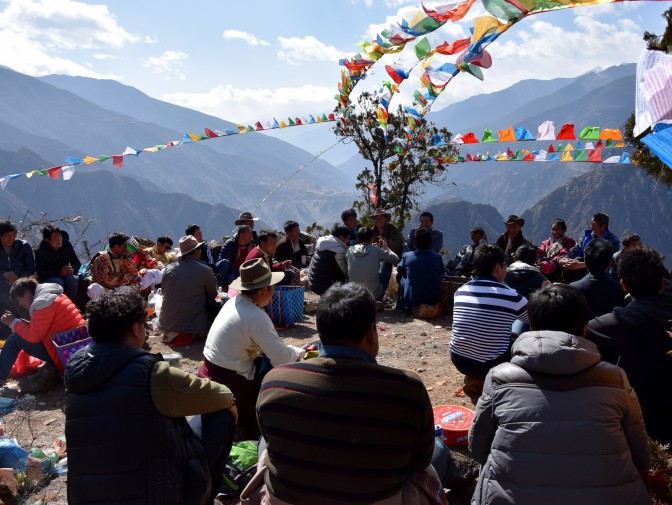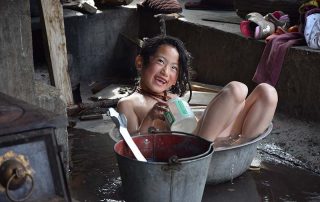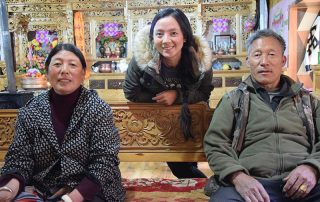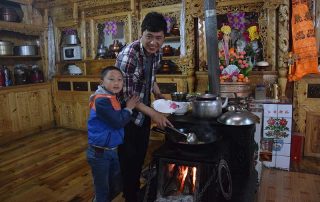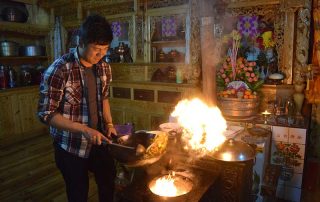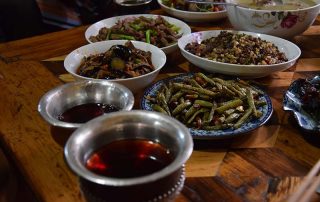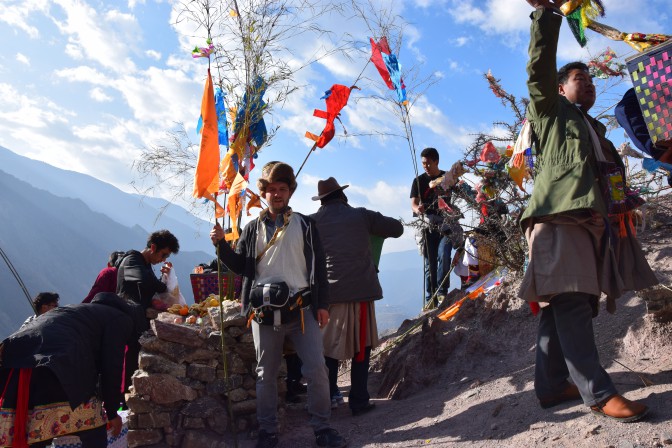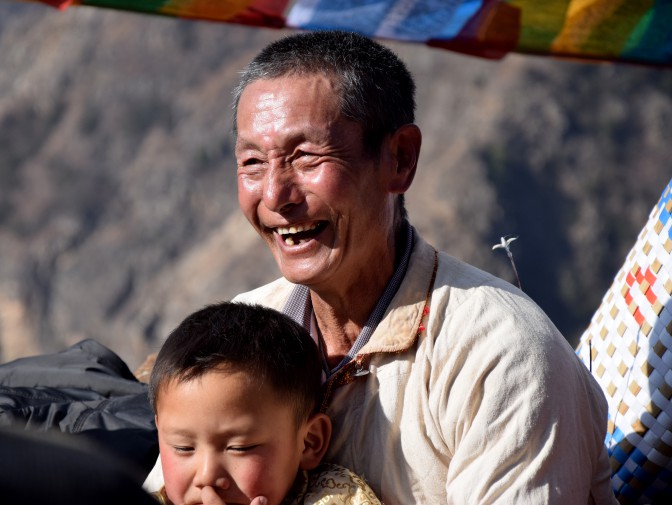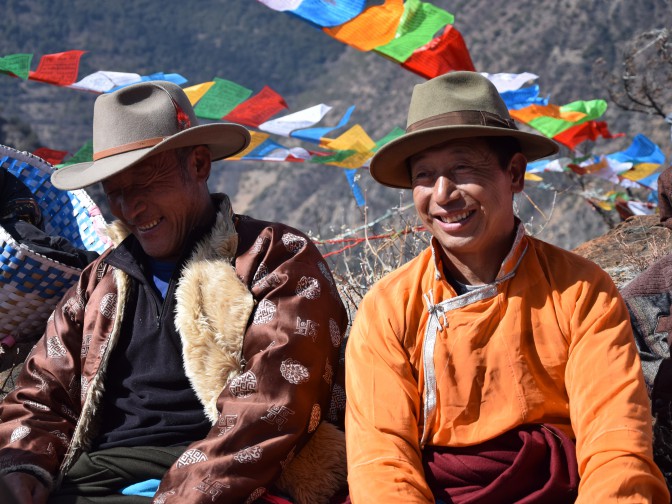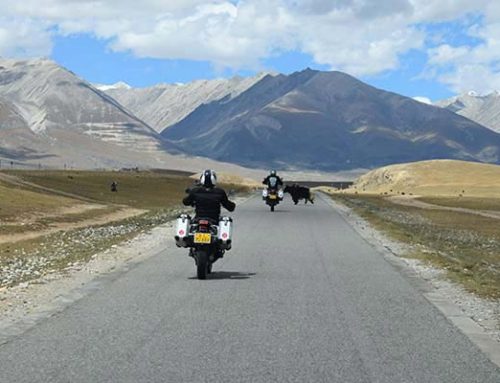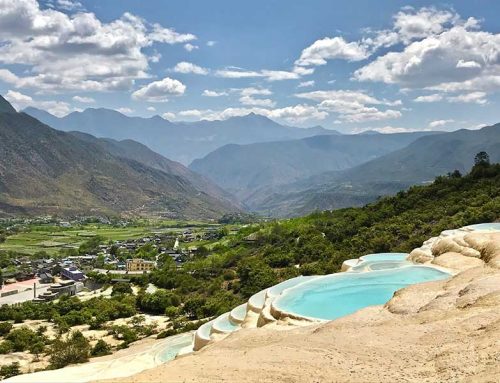Tibetmoto is celebrating Tibetan New Year “Losar”
As we do every year, we spent the Tibetan New Year in “our” Tibetan village of Jiabe. Jiabe is located in the northernmost part of Yunnan Province near the town of Deqen, on the shores of the mighty Mekong river. The village is at about the same altitude as Dali (2200 meters), but the climate here is warmer and drier. The conditions are perfect for grapes, oranges and water melons. Jiabe is a green oasis in the very dry surrounding region, which sometimes looks like a moon landscape– a typical rugged Tibetan landscape. This year, the Tibetan New Year Losar and the Chinese New Year share the same date, something that only happens every few years.
In this blog post, I will explain how Tibetans of this region celebrate Losar and the beginning of the Year of the Monkey.
Pig Slaughtering Day
Two days before New Year´s Eve each family kills one or two pigs to make a variety of meals and dishes for the celebration. The blood and fat are often mixed with rice to make delicious breakfast sausages. After the pig is slaughtered, homemade barley liquor is poured into the mouth of the animal and prayers are said. After removing the intestines and most of the meat and fat, the pig is filled with salt and stitched back together and put out in the sun.
This ensures a high degree of conservation and the remaining meat can be used throughout the year. In the old days, villagers would sit on the stitched-up pig carcass, claiming that it would make the meat taste better. This is no longer done in present-day Jiabe. Normally, Tibetans here slaughter only seldom and often only once a year.
Getting Ready and Family Dinner on New Year´s Eve
On New Year´s Eve, all family members use the day to get ready for the celebration in the evening. The kids take a bath and everyone dresses up in their best. In former times, newly bought clothes were worn which, according to tradition, could be bought only once a year, before New Year. Since the villagers have much more money nowadays, this tradition is becoming less important. People are normally able to buy new clothes all year round if needed.
The preparation of dinner starts in the afternoon. We decided this year to make 12 dishes. I contributed with an Indian pineapple curry and German meatballs (Frikadellen). Especially the meatballs were requested by all members of the family. They loved them last year. Besides that, we decorate the house with prayer flags and colorful cloth. After a sumptuous meal, the family members sit together and talk far into the night, drinking barley liquor (Tib.: Ara) or homemade red wine. In many cases, some family members are living in a different town or even a different province and only visit home once a year.
First Days of New Year
On the first two days of the New Year, the men and women gather in the morning for a couple of hours on two different hills near the village. The men climb the highest hill in the vicinity, and the women climb a smaller one. The gathering on the men’s hill follows a protocol.
The men of each family will carry several bamboo sticks decorated with prayer flags up the hill. The bamboo has been cut some days before from a region at a higher altitude and has to have at least some of the branches growing from the top of each stick and must be of a certain size. The cutting is mostly done by a younger man of the family because the hike from the village up into the forest where the bamboo grows takes several hours. The bamboo sticks are placed at several designated prayer sites on the holy village hill.
After the men gather on the flat top of the hill, snacks, drinks, and cigarettes are distributed among family and friends. Then, some of the men will start making jokes about other members of the party, and soon laughter and friendly chatter fill the air. The jokes might have a social purpose, since in this way members of the village can publicly ridicule others while camouflaging their criticism.
After many jokes, the elders of the village start making small speeches about topics they find important. The speeches might be about relationships between family members or philosophical and religious topics.
After several hours and a lot of snacks, cigarettes and drinks, the men will go back to the village, loudly singing prayers on the way down. The afternoons are often spent on the village square, dancing and singing traditional songs or competing in an archery contest. In the evenings, there are traditional Tibetan parties at the community center.
There are 30 families living in the village of Jiabe on the shores of the Mekong, but the village is more lively than a midsize town in a Western country during Losar. Happy New to Year of the Monkey to all of our readers!
Author´s note: If you want to experience an authentic Tibetan village, contact us! We offer an unforgetable Homestay in Jiabe!

